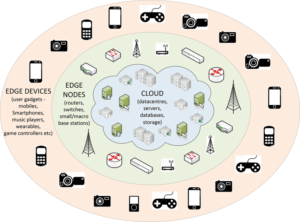Network Resilience: SD-WAN vs Emerging SASE Solutions for Modern Networks
Earlier, SD-WAN (software-defined wide area network) freed companies from the problems of legacy MPLS services. Though SASE (secure access service edge) has grown in popularity, optimizing traffic management within the network (SD-WAN principle) remains relevant because it directly impacts network efficiency, application performance, and user experience.
The need now is an approach that utilizes SD-WAN to connect locations besides addressing its security and deployment limitations. While SD-WAN principles focus on traffic management, SASE is useful in ensuring comprehensive security across distributed networks, securing remote access, and adapting to the dynamic needs of the modern workforce.
Addressing Core Operational Concerns with SD-WAN and SASE
SD-WAN and SASE collectively address a company’s core operational concerns. SASE, with its Zero Trust Network Access (ZTNA) model, provides branch offices, remote workers, and mobile users, with secure application access. Besides, it eliminates the attack surface by verifying user identities and enforcing strict data access policies. SD-WAN complements this by optimizing application traffic, ensuring seamless access to critical applications and data while efficiently routing traffic to match workflow needs.
SD-WAN and SASE: Key Differences
SD-WAN and SASE benefit organizations in the need to improve their security and network performance.
| Key Areas | SASE Benefits | SD-WAN Benefits |
| Deployment and Architecture | Unified, cloud-native, simplified deployment | Optimized traffic routing for efficiency and not a cloud-centric solution though can provide cloud computing |
| Security | Comprehensive, built-in security | Security features may require additions |
| Traffic and Connectivity | Secures traffic from any location | Efficient traffic management within the network |
| Remote Access | Enables secure remote access | Supports remote access, may need additional components |
| Required Expertise | Requires expertise in networking and security | Requires less specialized expertise |
SD-WAN and SASE serve different networking needs for businesses. The choice between SASE and SD-WAN depends on a company’s specific network requirements and operational priorities.
| Business Type | Networking Solution that Best Fits the Needs |
| Small Businesses/Startups | SD-WAN |
| Remote Workforces/Cloud-Based Applications | SASE |
In today’s rapidly evolving digital landscape, network security and performance have become critical. While SD-WAN can optimize network traffic and streamline deployment, SASE can ensure data integrity and protect the organizational network against evolving threats. Thanks to remote work, SASE has quickly become popular since 2022. By offering a comprehensive approach to optimizing network performance through managed SD-WAN, FatPipe Networks helps organizations achieve seamless connectivity and enhanced efficiency. Besides, extending SD-WAN with the security functions of SASE ensures a holistic and robust defense against cyber threats.





